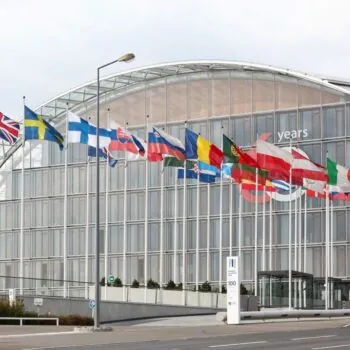Today, the One Planet Summit takes place in Nairobi, an important international moment for climate action. Last week, the conference of the European Development Finance Institutions (EDFI) took place – the club for 15 public development finance institutions investing in the private sector in developing countries, many of whom are investing in Africa. However, unlike the multilateral development banks and the International Development Finance Club, the EDFI group has yet to make a collective statement on aligning finance with Paris climate goals.
Under the Paris climate accords, countries have committed to making finance flows consistent with a pathway toward low greenhouse gas emissions and climate-resilient development. There’s no time for delay given the world is currently off track to meet the global climate goals. Many of the world’s most vulnerable people are already facing severe impacts. EDFI members should agree to align with the Paris Agreement this year, like their counterparts at development banks.
The EDFI group is investing substantially in climate action and the UN sustainable development goals. Together, these institutions had a collective portfolio of more than 37 billion Euros in committed investments at the end of 2017.
With climate finance of the group so far amounting to almost 7 billion euros at the end of 2016, the group is already doing a lot to invest in green projects such as solar and wind energy. But, could this group be missing further opportunities to raise its ambition on climate action?
Private investments and greening the financial sector
EDFI, the Association of bilateral European Development Finance Institutions, was founded in 1992 and represents 15 institutions. A third of the groups finance goes toward the financial sector.
Investments in the financial sector, like local banks and microfinance institutions, provide a great opportunity to support green finance and climate resilience. There are existing lessons from IFC, the World Bank’s private sector arm, which has developed a green equity investment approach and asks clients to disclose their exposure to coal.
The group already supports banks to raise their environmental and social standards. The EDFI could go a step further by supporting the banks they work with to track their emissions or scale-up green finance.
There may be more opportunities for members of the group to issue green bonds. For example, FMO (Netherlands) is already active in sustainability bonds, while Proparco (France) invested in the first Green Bond issue by Banque Centrale Populaire, one of Morocco’s largest banking groups.
Investing in local banks is also an opportunity to support resilience. For example, EBRD invests in Climadapt programme in Tajikistan – which provides loans to local households and small businesses for investments in climate change resilience.
Sustainable infrastructure and power
The second biggest sector this group invests in is power infrastructure, with around a fifth of the group’s total investments. The group reported an additional 74,000 GWh of electricity was generated in 2016. How much of this is generated by clean energy we do not know. EDFI members should make efforts to report this. The power sector will have to shift to a net zero world by mid-century in order to stabilize the world’s climate.
Most European governments which are shareholders of the EDFI members are part of the Powering Past Coal Alliance, a coalition of national and sub-national governments, businesses and organisations committing to restricting finance to coal. Canada recently ended support for coal by Export Development Canada, and UK’s CDC Group excludes investments in coal via financial intermediaries. EFDI members should follow this lead.
The group may be able to actively support a transition away from fossil fuels in the countries and companies they invest in, especially since more than 40% of coal plants globally are unprofitable.
In future, the group’s exclusion list could potentially be further updated to exclude high-risk investments such as oil exploration, something already excluded by the World Bank and the European Bank for Reconstruction and Development.
Greening the portfolio and taking up new opportunities
Several members of EFDI are already taking steps to align lending with the Paris Climate Agreement. For example, Dutch agency FMO made a pioneering commitment to align with a 1.5 degree pathway and developed a methodology to do this.
Proparco, a part of the AFD Group of the French Development Agency, has a strategy to be 100% compatible with the Paris Agreement. This is a less technical approach, applying a set of compatibility criteria across their investments.
In terms of tracking emissions, the group members could explore whether to adopt a common approach to greenhouse gas accounting – for example, using the International Financial Institutions approach. A few members of the group are taking part in this wider working group to share learning. Several have also adopted a portfolio approach to greenhouse gas accounting. They account for the total emissions of their total investment portfolio rather than just the emissions of individual projects. All members should strive to adopt this approach.
Another opportunity could be on annual reporting on how much climate finance has been catalyzed, perhaps using methodologies from the main development banks. Some of the group have existing commitments to scale up climate finance, for example, Proparco has earmarked 2 billion euros to climate projects by 2020.
By sharing learning, the group will be better able to take up opportunities of the low-carbon transition and make their investments more resilient. IFC estimates that climate investment opportunities will total $23 trillion in emerging markets by 2030, many of which are in green buildings and energy efficiency.
By aligning with international best practices and standards, this group can help unlock this potential for green finance, and help support climate action to ensure the worst impacts of climate change are prevented.


